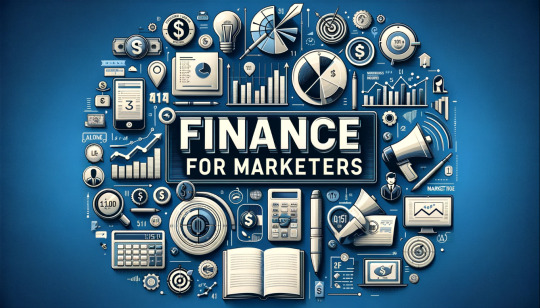Text
What’s the deal with AI and Automation?

They’re not magic potions.
We recently had the opportunity to share examples of using artificial intelligence (AI) in our content workflows via the Community of Practice session with communications officers from the Ministry of Home Affairs.
AI is fair game for everyone. Although we may be at different stages in how we use it, there’s always something to learn from one another.
The other day, we tried moving a “LinkedIn-to-Viva Engage” Power Automate workflow between user environments. I told the engineer I wanted to use JSON info from an email to automatically update a SharePoint Excel as we have been doing that manually.
I saw his eyes lit up. “I can help you with that,” he said.
Turns out, the solution already exists. I was overcomplicating things.
Combining AI and automation can help reduce manual and repetitive work.
In short, AI “thinks” and automation acts.
It’s so easy It’s not. It takes multiple tries to get the results you want. For example, I often have a vague idea for an image but don’t know how to write the correct prompt. So, I asked ChatGPT to write it for me. While automation can save time, it takes considerate effort to build clear if-this-then-that logic. Poorly designed workflows can cause more problems than they solve.
It’s not a solution looking for a problem The challenge is setting aside the time to identify what you do repeatedly every day and break down the steps.
AI will replace jobs and humans In reality, it’s more likely to change jobs than eliminate them. Most AI today still needs human oversight. For example, some tools let you generate a video using text prompts. In programming, some developers call it “vibe coding”. However, if you have a working knowledge of video editing software, you’ll get better results. You’re not replacing the skill but using AI to make it more efficient.
AI is objective Not really. AI is trained on human data, which can be biased. If the data is flawed, the AI will be too.
More data does not mean better AI It helps, but the data must be relevant and high quality. Too much noisy or biased data can make AI worse.
As for ChatGPT, these are custom traits I told ChatGPT it should have:
Use simple language: Write plainly with short sentences.
Avoid AI-giveaway phrases: Don't use clichés like "dive into," "unleash your potential," etc.
Be direct and concise: Get to the point and remove unnecessary words.
Maintain a natural tone: Write as you usually speak.
Avoid marketing language: Don't use hype or promotional words.
Keep it real: Be honest; don't force friendliness.
Stay away from fluff: Avoid unnecessary adjectives and adverbs.
Focus on clarity: Make your message easy to understand.
0 notes
Text
Workplace quotes that became my principles in the office
Continuing a previous post about "Life lessons at work", these are meeting room conversations that had shaped my thinking at work.

"How many phones do I have to sell to fund your campaign?"
This question was asked during a reporting session for a marketing campaign where we sought budget approval from the CFO. Marketing is inherently a cost center within any organization. Unless you can connect the entire consumer journey to your point-of-sale data, quantifying the return on investment (ROI) of demand-generation and performance marketing activities is challenging. If you can't directly quantify the number of product units your campaign will sell, focus on demonstrating how you can be more efficient with your marketing dollars.
"Who do these people look up to?"
Most people have someone they admire or aspire to be. When we were developing a creator strategy targeting the younger generation, we asked ourselves this question. If you are a budding photography enthusiast with only a handful of followers, who are the heroes you look up to as you grow? Identifying these aspirational figures allowed us to engage with them as a brand to groom the next generation of creators.
"When you feel down, look back and remind yourself of the achievements you have made and use that as motivation."
Work life is rarely smooth sailing, and many factors are often beyond your control. So it is important to pause and remind yourself of your achievements, no matter how small, and the progress you've made to reach your current position. These can serve as a powerful source of motivation during difficult times.
0 notes
Text
#iykyk

From journalism to marketing, content creation has been the single thread that has tied my entire career together. Here are my five key takeaways.
Know your audience: Understanding who you are marketing to, from potential customers to internal employees, and where they consume content is crucial. This information determines your message, tone of voice, and how you engage with them. It also helps define what success looks like in your content strategy.
Fit for platform: Each media platform has its own guidelines for creating content within safe zones. While we used to follow the principle of "create once, use everywhere" to maintain brand consistency and reduce post-production costs, today, tools like Canva and CapCut make it much easier to optimize content for each platform, whether in portrait or landscape format.
Extend reach with partners: Branded content is essential for communicating key reason-to-believe marketing messages and is seen as a trusted source of information. However, engaging partners such as content creators who share your values can help carry your message to audiences that your brand wouldn't typically reach.
Consistent publishing schedule: A well-maintained editorial calendar is central to keeping your audience engaged and coming back for more, while also priming them for bigger moments of interest.
Continuous test-and-learn: What worked yesterday may not work tomorrow, so maintaining an always-on test-and-learn mindset is important. Start by defining your hypothesis, measurement approach, expected result, and time to insight.
0 notes
Text
Shopee vs. TikTok: key differences as an individual seller

Over the past few years, I have had the privilege to work with very competent and passionate e-commerce enablers, media buying agencies and key account managers who have helped our campaigns surpass GMV targets, build future capabilities and bagged some awards along the way.
However, applying the same knowledge as an individual seller just starting their online store is a very different experience. The setup process, from account registration and verification to product listing and order fulfillment on Shopee and TikTok, is generally similar.
In my opinion, the top three differences are:
User behavior: On TikTok, the entry point is content (videos and livestreams), where people are entertained first, and making a purchase is a by-product (cue "TikTok made me buy it"). On Shopee and other marketplaces, consumers enter with the mindset to buy, often stacking promotions and vouchers to get the best deal. As a seller, this means the approach to gaining awareness from potential customers is different.
Seller account: The Shopee seller account is linked to your personal account, which you also use to buy from other sellers. However, you can set up multiple accounts if you have more than one phone number. On TikTok, you can easily set up a separate account with an email address, keeping your TikTok Shop account distinct from your personal account, where you may post content unrelated to your store.
Ease of use: The overall user experience for setting up your online store is easier on Shopee, possibly aided by its brand color palette. TikTok, on the other hand, feels a bit more overwhelming with the amount of detail. However, it offers features to help you auto-generate shoppable videos based on your product listings.
At the end of the day, two things matter most for driving traffic: content and media, which apply to both offsite and retail media. Without good, engaging content, you cannot get paid media dollars to work as hard.
0 notes
Text
Automation, actionability, and accountability

Over the past decade, I have used several software-as-a-service (SaaS) offerings to streamline processes, enhance efficiency, and improve results. These are my favorite platforms so far.
Automation with Epsilo.ai
Epsilo is a closed-loop operation hub designed for digital commerce teams to unify data sources, benchmark performance, and execute campaigns. Integrating various aspects of digital marketing into a single platform is crucial for brands to understand the efficacy of their marketing investments. Epsilo excels in areas such as rule automation and optimization, integrated dashboards, and predictive trends that aid in planning. Winning an award for the best use of AI was an added bonus.
Actionability with Sprinklr and Asana
For content and project management, I turn to Sprinklr and Asana, respectively. Sprinklr is a unified customer experience management platform capable of monitoring brand health, gaining industry and competitive insights, managing content lifecycles, and handling social media touchpoints. Given its extensive features, it can be daunting for first-time users.
Asana is an enterprise-grade work management platform that should be familiar to project managers. Beyond task tracking, it also offers features for workflow automation, resource management, and serves as a reporting dashboard. For people who are task-driven and perhaps OCD.
Accountability with Traackr
For brands working with creators and influencers, Traackr is my platform of choice. I first engaged with Traackr during my tenure at Samsung, and over the years, their features have evolved to provide even more precision and accountability in measuring ROI from influencer engagements. Traackr is a robust influencer relationship management tool that allows marketers to identify and engage with key influencers, track campaign performance, and analyze the impact of their efforts.
On a personal level, these days I am dabbling with Notion. What about you?
0 notes
Text
Finance 101 for marketers

In the world of business, it is common for specialized departments to operate in their silos. One notable example is the marketing team, which often focuses on brand building, creative and customer engagement, sometimes at the expense of a deeper understanding of the broader business and commercial workings of the company. This gap can lead to misaligned strategies and lost opportunities.
These are some of the common terms that I have come across over the past decade that every marketer should have a basic understanding.
GMV (Gross Merchandise Volume): This is the total sales value of merchandise sold through a particular marketplace over a specific time period. It measures the size of a marketplace or business, but not the company's actual revenue since it doesn't account for discounts, returns, etc.
Revenue: This is the total amount of income generated by the sale of goods or services related to the company's primary operations.
COGS (Cost of Goods Sold): This refers to the direct costs attributable to the production of the goods sold. This amount includes the cost of the materials and labor directly used to create the product.
Gross Margin: A financial metric indicating the financial health of a company. It's calculated as the revenue minus the cost of goods sold (COGS), divided by the revenue. This percentage shows how much the company retains on each dollar of sales to cover its other costs.
Operating Income: This is the profit realized from a business's core operations. It is calculated by subtracting operating expenses (like wages, depreciation, and cost of goods sold) from the company’s gross income.
Ordinary Income: This typically refers to income earned from regular business operations, excluding extraordinary income which might come from non-recurring events like asset sales or investments.
Net Profit: Also known as net income or net earnings, it's the amount of income that remains after all operating expenses, taxes, interest, and preferred stock dividends have been deducted from a company's total revenue.
PPWF (Price Pocket Waterfall): This term is used to describe the breakdown of the list price of a product or service down to the net price, showing all the factors that contribute to the price erosion. The "waterfall" metaphorically illustrates how the price "falls" or reduces step by step due to various deductions like discounts, rebates, allowances, and other incentives given to customers. This analysis is important for businesses to understand their actual pricing dynamics and profitability. It helps in identifying opportunities for price optimization and controlling unnecessary discounts or allowances that erode the final price received by the company.
Net Present Value (NPV): A method used in capital budgeting and investment planning to evaluate the profitability of an investment or project. It represents the difference between the present value of cash inflows and the present value of cash outflows over a period of time.
Internal Rate of Return (IRR): A metric used in financial analysis to estimate the profitability of potential investments. It's the discount rate that makes the net present value (NPV) of all cash flows from a particular project equal to zero.
CONQ (Cost of Non-Quality): This is the cost incurred due to providing poor quality products or services. It includes rework, returns, complaints, and lost sales due to a damaged reputation.
A&P (Advertising and Promotion): These are expenses related to the marketing and promotion of a company's products or services. It's a subset of the broader marketing expenses a company incurs.
Return on Investment (ROI): In simple terms, ROI measures the profitability of an investment. For marketing teams, this means understanding how campaigns contribute to the company's bottom line, beyond just tracking engagement metrics.
Return on Ad Spend (ROAS): ROAS specifically measures the efficiency of an advertising campaign. It assesses how much revenue is generated for every dollar spent on advertising. It's similar to ROI but focused solely on ad spend and the revenue directly generated from those ads. ROAS is exclusively used in the context of advertising and marketing. It helps businesses determine which advertising campaigns are most effective.
Customer Lifetime Value (CLV): This predicts the net profit attributed to the entire future relationship with a customer. Effective marketing strategies should aim at not only acquiring new customers but also retaining existing ones, thus maximizing CLV.
G&A (General and Administrative Expenses): These are the overhead costs associated with the day-to-day operations of a business. They include rent, utilities, insurance, management salaries, and other non-production-related costs.
2 notes
·
View notes
Text














The once-in-a-lifetime trip to Son Doong, the world's largest cave.
youtube
0 notes
Text
Why I gave up on private pilot certification
6 months and $60,000 later, I gave up on the training for private pilot certification.
It all began one day when I was at an aviation-themed cafe and was reminded of my dream to be a pilot when I was young. I was short-sighted back then, so I applied with the Civil Aviation Authority of Singapore to be an air traffic controller instead. Made it to the last round of interview, but was axed. :(
Fast forward 17 years later, I signed up for a flight preparatory course with Wings Over Asia. Flew for about 15 hours before I registered for a 14-day accelerated training program with AFIT in Van Nuys, Los Angeles.

The pressure started weeks before I went to California with the preparation for the FAA airman knowledge written test. On the first morning of the program, my instructor told me "lets fly!". I was not mentally prepared, but nonetheless did the preflight and off we went in the Cessna 172, a wildly different experience from the glass cockpit of the Diamond DA40 which I flew in Singapore.
After a couple of hours in the air, we landed back at Van Nuys and continued with ground school. The days were simple. We would fly for a few hours, then come back down for ground lessons, before flying again. The pace of the program was demanding. We would start at 7:30am and end around 4-5pm.
The jet lag that kicked in on the third day did not help. I was struggling with understanding weather systems, pilot regulations and airspaces, etc. The long hours of flying practicing maneuvers, traffic patterns in a small confined space and refueling the plane every time we land took the joy out of flying.
The experience became very technical and it rightfully should given that the goal was to get the private pilot certification in 14 days. On the fourth day of the program, I gave up.

My instructor and the school encouraged me to continue as they felt I was doing all right and once I made it past the first week, things would be a lot easier. I was not convinced. In order to recover the joy of flying, we took the plane out and flew to a nearby airport for lunch where amazing burgers were promised.
We hopped into a different Cessna and I was told to fly it. In hindsight, it was perhaps this flight that confirmed my decision to drop out. The flight instruments were different (granted that the basics are the same) from the Cessna that I flew the past few days and I low key panicked in an unfamiliar plane. One other pilot who was in the passenger seat jokingly told me after we landed that he was worried for his life. We laughed it off but one thing that was clear in my mind was that I was far from ready as a proficient pilot. Plus the concept of "lets fly somewhere" on a whim was neither a lifestyle I could imagine myself in nor could I afford it.


The moment I made up my mind to drop out of training, I felt a sense of relief. In the remaining two days, we did "fun" flights to Santa Monica beach, saw the Hollywood sign from the air and even did a delivery run to pick up oil from another airport. Missed a tour of Catalina island due to weather conditions prohibiting visual flights.

I have no regrets. After all, it is the journey that matters, not the destination. If anything, my student pilot license is forever. :)
0 notes
Text
youtube
Circuit training for private pilot with Wings Over Asia. Touch and go.
1 note
·
View note
Text
How much does it cost to become a private pilot?

Not cheap.
Here's a summary of the costs for the flight preparatory course in Singapore with Wings Over Asia and AFIT flight school in Van Nuys, Los Angeles:
Airbnb - $947 Equipment - $3,932 FAA - $1,688 Fees (flight) - $35,648 Fees (ground) - $1,707 Fees (landing, parking) - $1,848 SIN-LAX air ticket - $12,486 WOA membership - $2,575 Hertz car rental - $990 Total - $61,822
And I didn't finish the training. More on that in the next post.


0 notes
Text
Life lessons at work

Over the past decade, these five principles, some learnt the hard way, have remained a constant that I hold true to heart.
Everyone is a father, mother, son and daughter to someone
We often tend to see each other as colleagues at work, defined by our responsibilities, job titles and organization hierarchy, and forget that each of us is also a father, a mother, a son and a daughter to someone. Everyone has a personal situation that they may not be willing to share in a work environment. Do not bring your emotions to work and rush to judge based only what you see. Be gracious.
Your job title does not determine your capability
We are also often judged to be proficient in the position determined by our job title. However, that is not necessarily always true especially if you are in a dynamic industry such as digital marketing where what we know yesterday may no longer be true today. Or have taken on a new role that covers areas which are new. What is more important is to have the mindset to problem solve and to keep learning. Be humble.
Knowledge is power
Many years ago during a coffee session, the CEO of the company I was at said something that remained a guiding principle for me ever since. He said he was not smarter than anyone else, but was able to make the right decisions for the company because he had access to more information by virtue of his position. So the next time you wonder why your boss, or someone higher up in the chain, seems to know all the right answers, it could be because he/she knows how or who to get information from. Do not belittle yourself. Keep learning.
Remuneration or recognition
At the end of the day, we work mostly for two reasons: remuneration or recognition. The latter can be in many forms and even a word of encouragement or a pat on the back for a job well done. So be generous with the people you work with. If you are getting neither, then it is time to reconsider your position. Know your worth.
Remind yourself of your achievements, no matter how small
When the going gets tough, it is important to pause, look back and remind yourself of the accomplishments you have made so far. It was those little achievements that have brought you to where you are today. So let that be your driving force. Know your motivation.
0 notes
Text
youtube
One year later after I left Korea, I went back for a short holiday via the vaccinated travel lane between Singapore and Korea.
0 notes
Text
youtube
A 12km loop starting from VivoCity at HarbourFront, up Mt. Faber, then crossing Henderson Waves into Telok Blangah Park, before heading down to Labrador Nature Reserve and then finishing the run back where I started.
0 notes
Text
What living in Korea taught me about waste management

When I moved to South Korea 10 years ago, it struck me as odd that I could not find any public rubbish bins on the streets. On one occasion, I carried the trash, a nondescript ice cream stick, in my hand all the way home. In more populated areas, night club flyers and disposable coffee cups are a common sight along sidewalks. You can still find places to dispose of rubbish in subway stations and convenience stores, but chances are you are out of luck outside.
That said, if there was one country which is getting it somewhat right for household trash disposal, it is South Korea.
1. Paying to get rid of refuse
Every household is required to buy special jong-nyang-jae (volume based) sseu-rae-gee bong-too (plastic trash bags). Different sizes, measured by the number of litres, are available and prices vary by district as local governments are responsible for their own waste management administration. General waste bags are opaque white and food waste bags are opaque yellow.
2. Separating trash
There are extremely detailed guidelines for separating trash.
Plastic bottles, glass objects and cans are disposed of separately. More recently, as part of the country’s efforts to promote recycling, transparent plastic bottles made of polyethylene terephthalate, also known as PET, should have their labels removed before they are discarded in a different collection bag.
Paper and cardboard boxes, which have seen an increase due to people doing more online shopping as a result of COVID-19, are its own category.
Hard food waste such as egg shells or chicken bones which are not compostable are sorted as general trash. This confuses me till this day.
In the past decade, Seoul city also introduced radio-frequency identification (RFID) machines for food waste disposal. A small RFID tag is issued to the household which is used to open the machine to deposit food waste.
3. Once a week
There is a designated day and area within the apartment compound to dispose of trash.
Sorting waste so that they can be treated accordingly is necessary and so is recycling. However, these are not the end solutions as we should be reducing trash and the use of plastic in the first place.This could start with a small act of bringing your own tumbler when buying your daily dosage of brewed coffee. Or saying no to plastic cutlery when ordering food delivery.
Everyone can play a part.
0 notes
Text
RE: Re: Re: FW: RE: Re: Check this out!

I chanced upon this article “Did You Get My Slack/Email/Text?” written by Erica Dhawan on Harvard Business Review recently. So I thought I would also share what I have learnt on the job working with emails, which probably is still the dominant channel of business communication.
If today we were still working in an office, I would also have been someone who would put on a pair of earphones, without anything playing, if I did not want to be disturbed. In most cases, the other party trying to reach out would get the cue and promptly text me on the company’s instant messenger, which I would notice immediately on my screen. The irony.
Instant Messenger and Email work as a pair of tools to get someone’s attention. When I was working in a Korean company, it was second nature to send an instant message to check if someone had read my email that I sent seconds ago, or if he/she had opened it in my Sent folder. Instant messages were to be replied immediately and emails, at the very latest, by the next day. It is attestation to the “palli palli” culture in Korea.
Email systems have evolved to eliminate long strings of “RE:” and “FW:” which make subject lines impossible to read on a mobile device. It serves no particular purpose other than to tell if an email has been forwarded outside of the initial distribution list, and when, if you look through the conversation history.
Other than making it a habit to remove these abbreviations leaving only the most recent one, below are some ways I manage my emails:
Include the name of the person I am trying to get attention from in the subject line. It is very hard not to click on an email with your name written at the front of the subject line, like being called out by the teacher in class to answer a question. Most email systems now also let you tag a person in the email body, so they would be alerted, but that is different.
Include “(FYI)” in the subject line if it was an email with reading or reference materials. Do not simply forward an email and expect people to know what to do with it.
Respect the “To:” and “Cc:” fields.
If there is an action to follow up, this should be written at the top of the email body and not buried under long paragraphs of text explaining the context.
If there is an email that I cannot reply to immediately, I would flag it as a to-do item in the inbox instead of assuming that I will come back to it later.
Are there other practices that work for you?
0 notes
Text
youtube
What is it like doing a round-island Sentosa run? The sights and sounds of a morning jog.
1 note
·
View note
Text
youtube
A look back at some of my most memorable rides in South Korea and Singapore in 2020. Highlights were always the food and coffee after.
0 notes